Stunning Trees With Red Berries In Winters
From Holly To Cherries, These Vibrant Trees Are A True Beauty In Winter Months
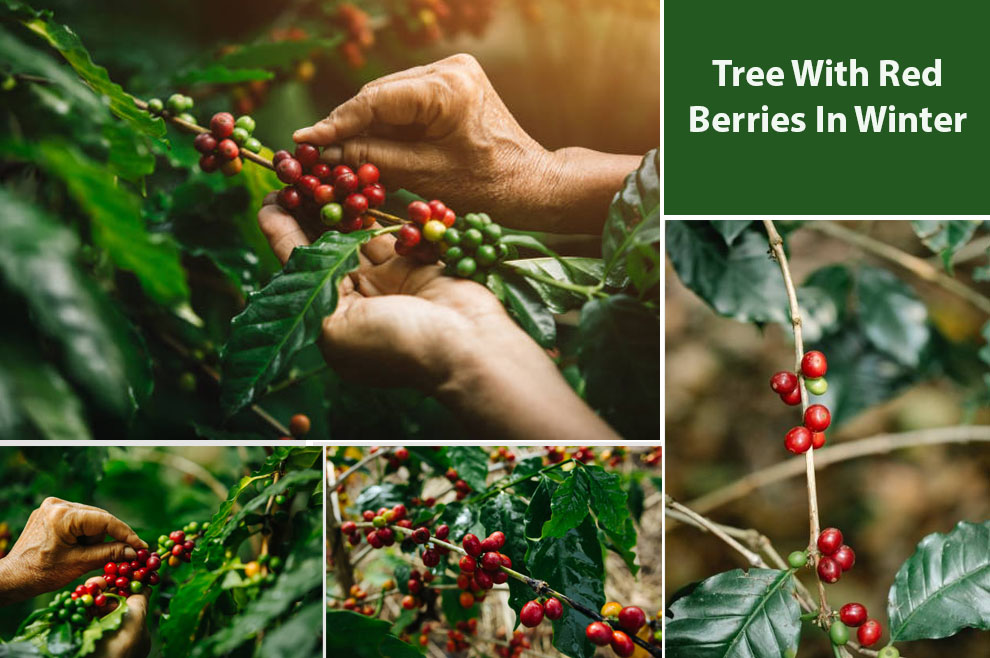
In our landscape, there is possibly nothing that screams Christmas louder than the red berries with glazing green leaves. Trees with red berries provide interest across the harsh cold weather by adding a joyous color to the landscape when the rest of nature is withering off.
These are evergreen trees that act as valuable food for wildlife. Several varieties of these trees can be grown for privacy and screening in the backyard. Some can even add an accent in the summer, while many will bloom in spring too.
How To Select A Tree With Bright Red Berries In Winter For Your Garden?
Red berries on the shrubs are more prevalent than you may know. However, not every variety bears flowers in winter. Some may even yield fruits in summer, following their spring bloom, like low and high-bush raspberries, strawberries, and cranberries.
Other shrubs and trees with red bushes hold the fruit across autumn and into the winter. These offer the maximum winter pleasure and act as food for the wildlife.
When picking the red winter berry bushes, ensure that the chosen variety is suitable for the garden. We recommend planting only the species that thrive in your location. Thus, it helps to be well-versed with the USDA planting hardiness zones because different varieties are suitable in different climatic zones.
Further, you must also ensure that your chosen tree is compatible with the level of sunlight, soil type, and the maintenance you can offer the plant. In addition, you must check its average growth rate and size to ensure that it does not outgrow your plant.
You must also learn to plant it correctly for the plant to thrive. Finally, consider whether you want a tree merely for its ornamental value or one with edible red berries.
Trees With Bright Red Berries In Winter
There are multiple trees from different species that bear red berries in winter. Here are some of the most prevalent ones.
1. American Holly
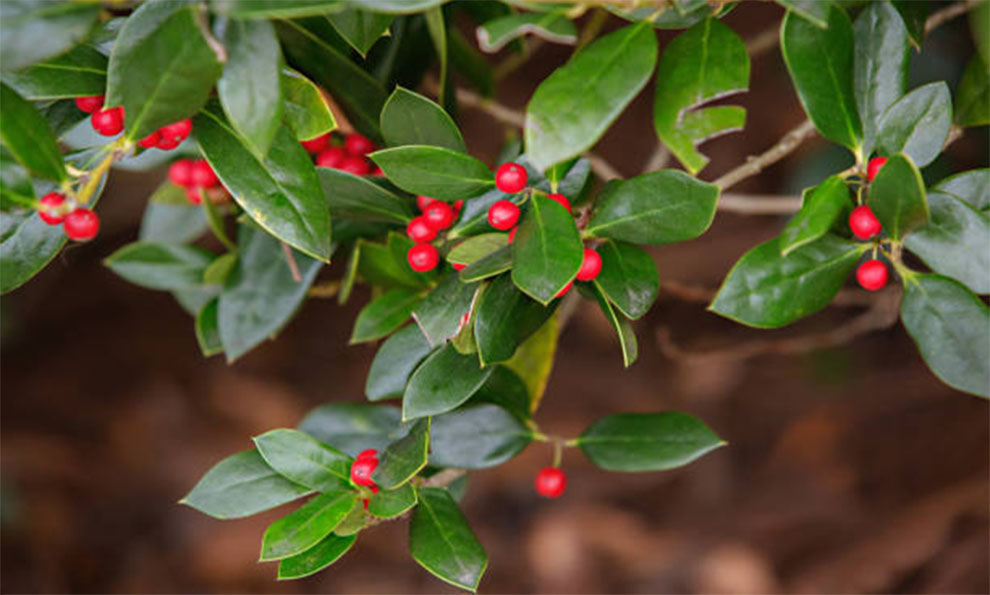
| Scientific name | Ilex opaca |
| Edible berries | No – It has poisonous fruits. |
| Where is it found? | Southern and eastern United States |
American Holly or Ilex opaca is the best winter red winterberry holly shrub. Beyond being a beautiful Christmas symbol, Holly is also one of the most beautiful winter trees with red berries.
It has green leaves across the winter and red berries widely employed in holiday wreaths. People also refer to it as the hummock holly, dune holly, and scrub Holly. These make for excellent privacy screens.
Native to hardiness zones five through nine, the plant grows in almost every soil type. It enjoys partial shade and can become about fifty feet tall. However, since they do not self-pollinate, you must have over one tree to get the berries.
However, if you have room to accommodate only a single winter red winterberry holly shrub, go with the Croonenburg variety, as it can self-pollinate since female and male flowers are on the same plant. So, go forth. Have an American holly jolly Christmas.
2. Pin Cherries
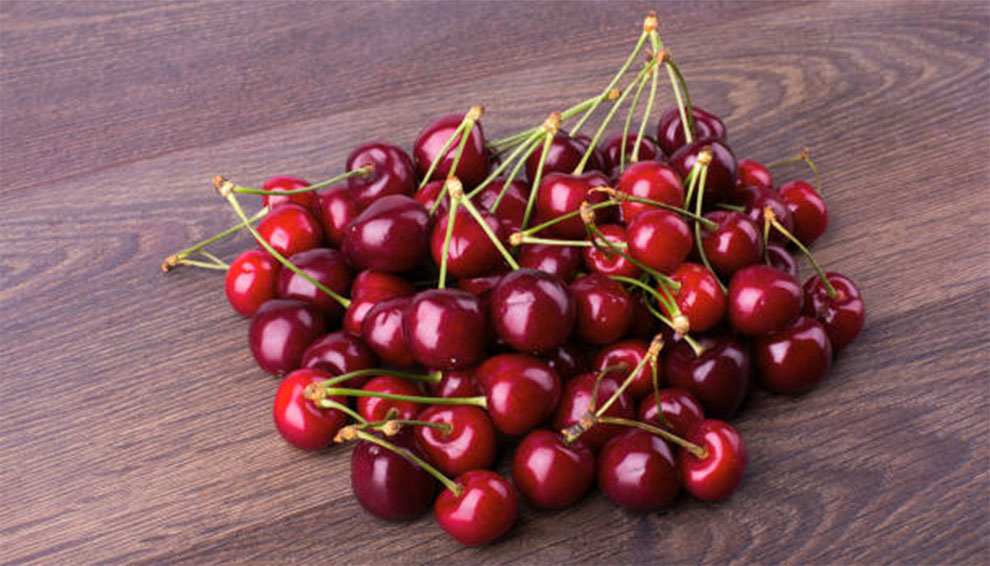
| Scientific name | Prunus pensylvanica |
| Edible berries | Yes |
| Where is it found? | Canada, North Central, and the North-eastern US |
Also called fire cherries, red cherries, or bird cherries, these trees have small edible fruits. They grow on a large shrub but can sometimes grow tall as a small tree. These shrubs grow between 18 – 95 feet and are identified by their round-topped crown.
They have lanceolate shaped leaves that alternatively grow on long, thin red colored stems. Every bright red cherry can be about 8 mm and have a seed inside. They mostly grow in parks or along the river banks.
3. American Cranberry
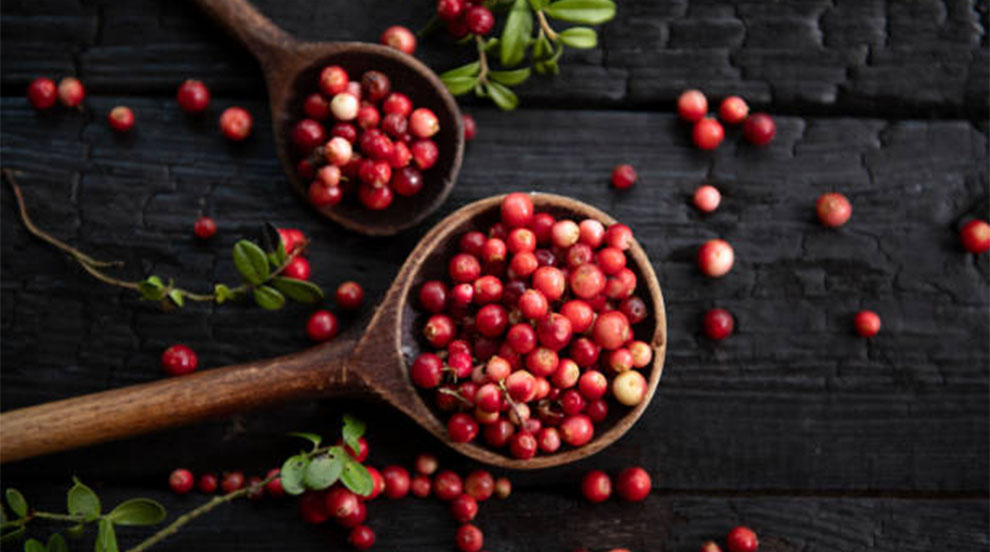
| Scientific name | Viburnum opulus var. americanum |
| Edible berries | Yes |
| Where is it found? | Northern North America, from Newfoundland west to British Columbia, south to Washington state, and east to northern Virginia |
Commonly referred to as the High Bush Cranberries, the American cranberries are used to prepare an essential side dish in holiday dinners. This American Cranberry is a beautiful deciduous tree with red berries in winter. The plant grows at least 12 feet high and blossoms with white flowers in the spring. It is only in the summer that the cranberries appear and last until the winter.
You can see them growing as clusters of red, glossy, tiny berry-like drupes. Their edible berries have a somewhat sour taste like any other cranberry. You can create a sour sauce and eat it with the meat. It is a dense bush with reddish-brown barks, attractive leaves, and sense arching stems. It has 15 mm berries that brighten the winter and fall garden landscape.
4. Blackthorn
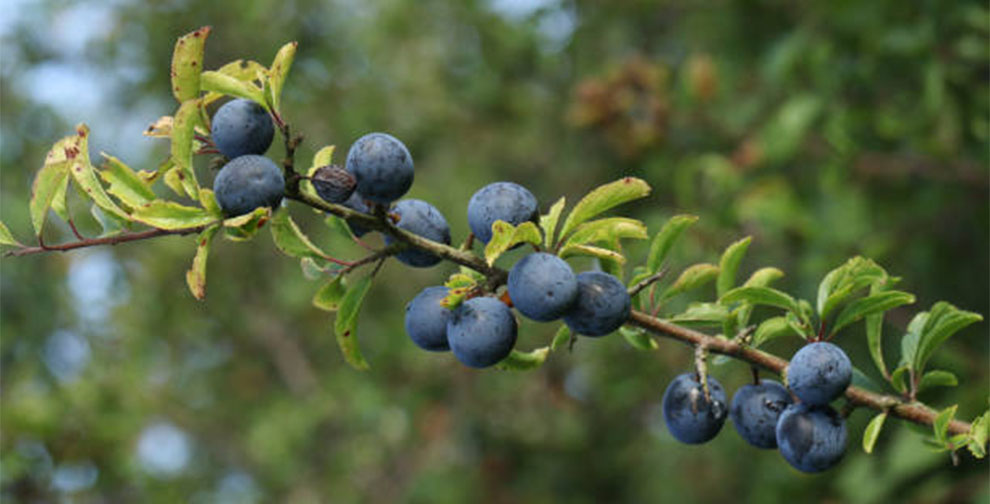
| Scientific name | Prunus Spinosa |
| Edible berries | Yes |
| Where is it found? | Europe, western Asia, and locally in northwest Africa |
An excellent plant for wildlife, Blackthorn has small white flowers that bloom in spring and are visited frequently by pollinators. Originally red its ripe fruit turns a bit blue-black, that grow in winter and are widely enjoyed by larger birds.
It is also employed in making preserves and wines or for flavoring gins. This tree is hardy and grows about 4 meters tall. It thrives in full sun in well-drained, moist soil.
5. Possumhaw
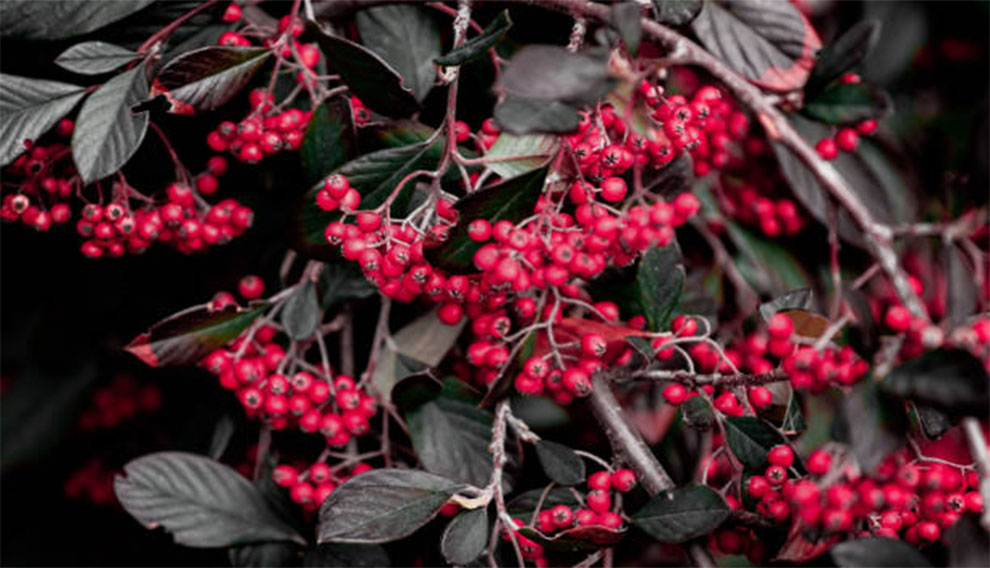
| Scientific name | Ilex decidua |
| Edible berries | No, they are toxic |
| Where is it found? | United States |
Next, we have Possumhaw, a plant suitable for dry and wet conditions, southern climates, and vast landscapes. It grows between seven and twenty feet wide and tall in USDA hardiness zones five through nine. A popular deciduous plant, Possumhaw blooms in winter and fall and is a knockout in fall through winter.
Full of red berries, it is a tree with red berries in winter & no leaves. Its fruits last longer than the ones of its better-known and smaller relative, the winterberry. Only the female trees bear fruits, but they must have a male pollinator in the vicinity.
The plant produces an array of fruits when exposed to at least half a day of the afternoon sun or full sun. It can withstand drought, heat, and different soil types once established.
6. Snake Berries
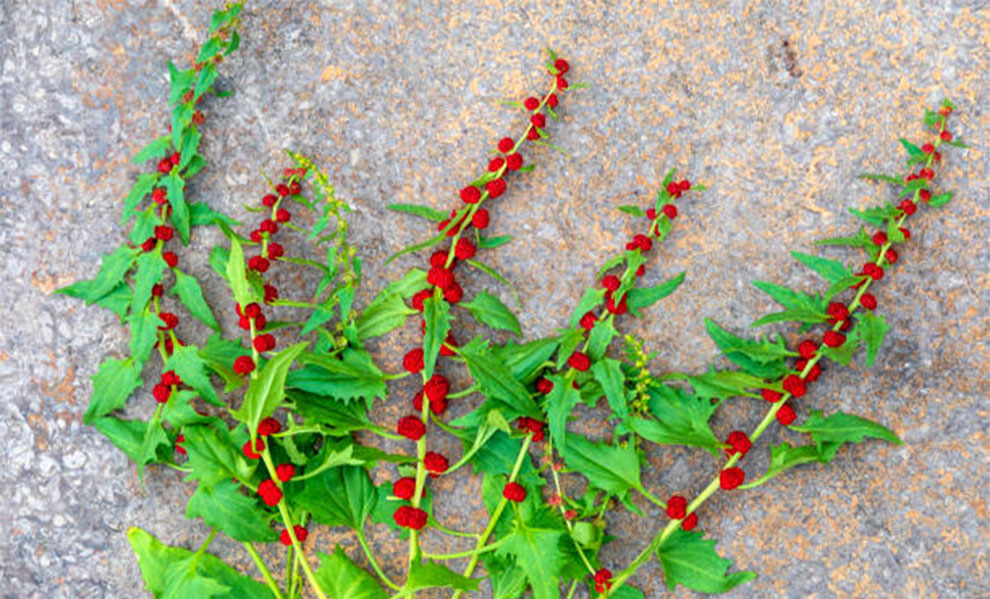
| Scientific name | Potentilla indica or Duchesnea indica |
| Edible berries | Edible, but not flavourful |
| Where is it found? | Eastern and southern Asia |
These red winter berry bushes have the texture and look of a strawberry and are called mock strawberries or Indian strawberries. But they are not real berries. The white and red fruit yielded is edible and looks like a berry. Snake Berries is a perennial herb that produces a fruit with a sweet taste and a juicy, fleshy texture.
As a perennial herb, it has multiple medical benefits and finds use in curing skin diseases via its natural healing power. In addition, this tree helps with issues like inflammation, heart disease, and body pain.
However, no amateur must use it for treatment purposes sans any expert supervision. If not utilized in the correct quantity, the berries can become toxic to the body.
7. Carolina Holly
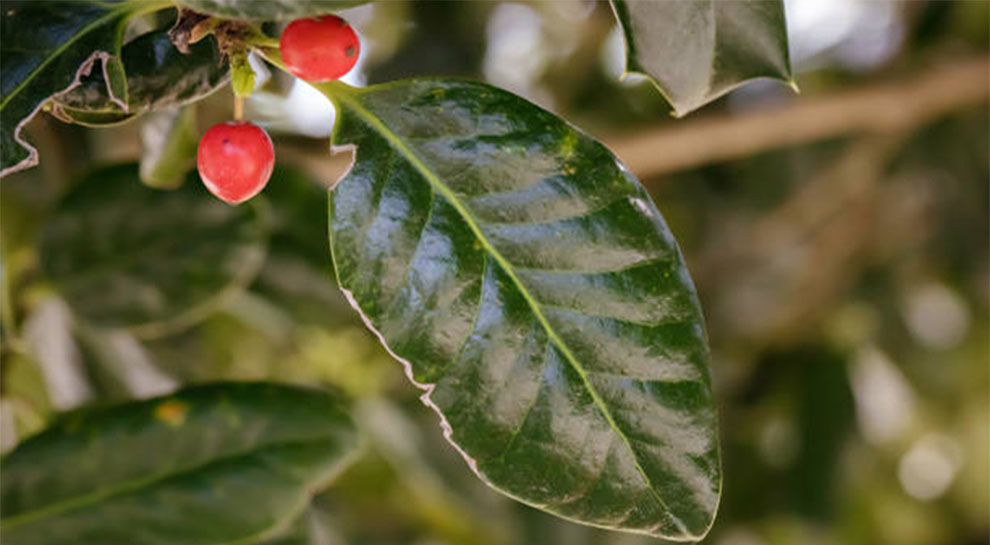
| Scientific name | Ilex ambigua |
| Edible berries | No |
| Where is it found? | Southeastern US |
The red berries on trees in winter are deciduous species of Holly. They thrive in sandy soil, resulting in one of the popular common names for the plants – Sand Holly. The plant produces bright, red flowers during tall and tends to drop from the tree, making them less visually appealing in the winter.
Many even refer to this tree with red berries in winter & no leaves as possum holly and ambiguous winterberry. Native to the Southeastern US, the plant grows best in USDA zones seven through nine with an approximate height between fifteen and twenty feet. Carolina Holly demands part shade to full sun to blossom well.
8. Cherry Tree
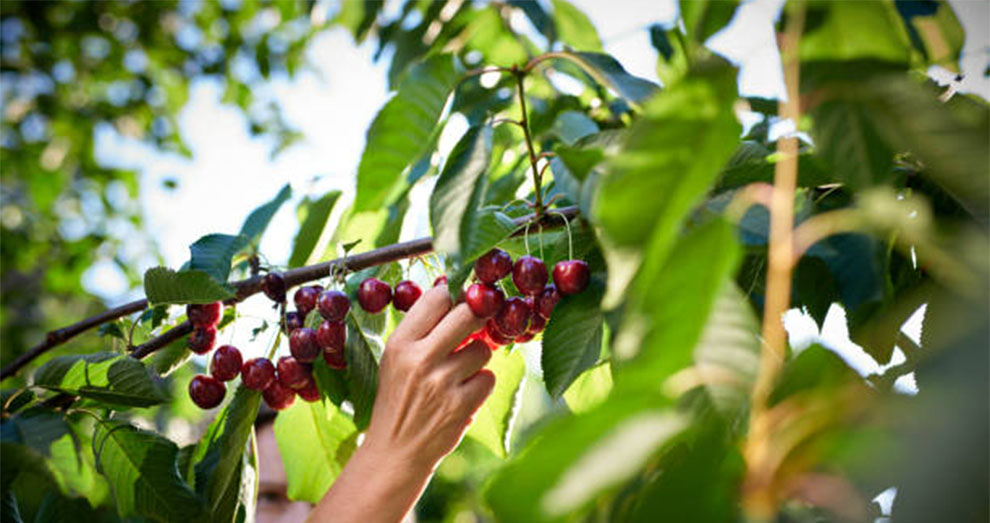
| Scientific name | Prunus |
| Edible berries | Yes |
| Where is it found? | Northern temperate regions |
One of the most appealing small trees with red berries in winter, the Cherry Tree produces a delectable fruit with beautiful flowers. Unlike the others mentioned on this list, Cherry trees ripen during the summer, but the tree’s beautiful flowers herald the end of winter, indicating spring is on the way.
You can grow several Cherry trees in USDA zones three through nine. Sweet cherries like full sun, but acidic-cooking cherries like partial shade to grow.
One of the best Cherry varieties is Sweetheart with bright red cherries. It is a self-fertile plant. You can find cherries in different sizes, and the dwarf varieties are suitable for growing in containers. You can place them on the patio.
9. Red Gooseberry Bush
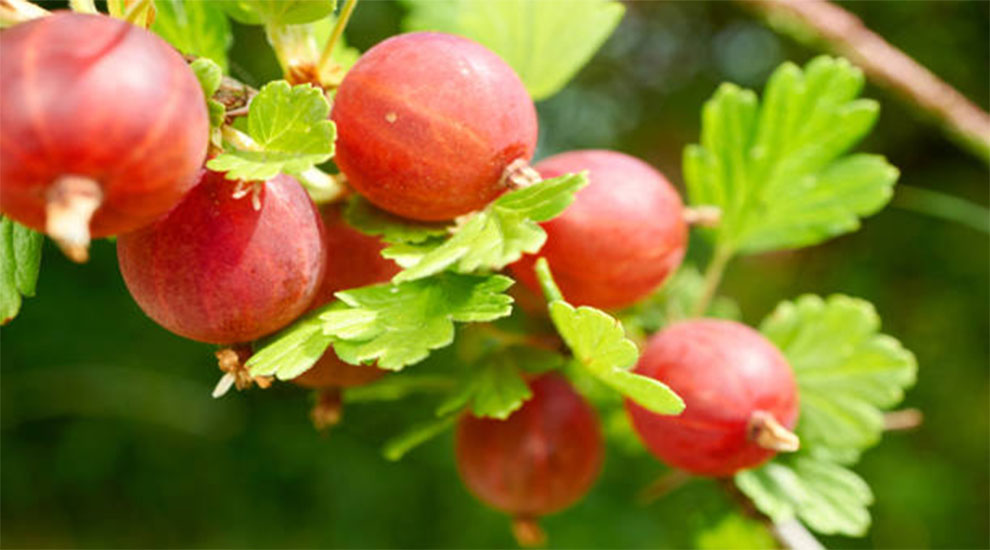
| Scientific name | Ribes uva-crispa |
| Edible berries | Yes |
| Where is it found? | Temperate regions of the Northern Hemisphere |
When you think of gooseberries, what comes to mind is sour green berries. But to your surprise, some of the varieties of gooseberries are red too. Its red or tart green berries are oval in shape with tiny hairs covering them.
This red winter berry bush grows around five feet high and has woody stems and thorns. The plant has light green leaves that are three or five-lobed.
Gooseberries have a unique taste. With some added sweetener or spices they can be used in pie filling or for making jams. Beyond producing red or green berries, some gooseberry bushes even produce berries in yellow and white color.
10. Evergreen Dogwood
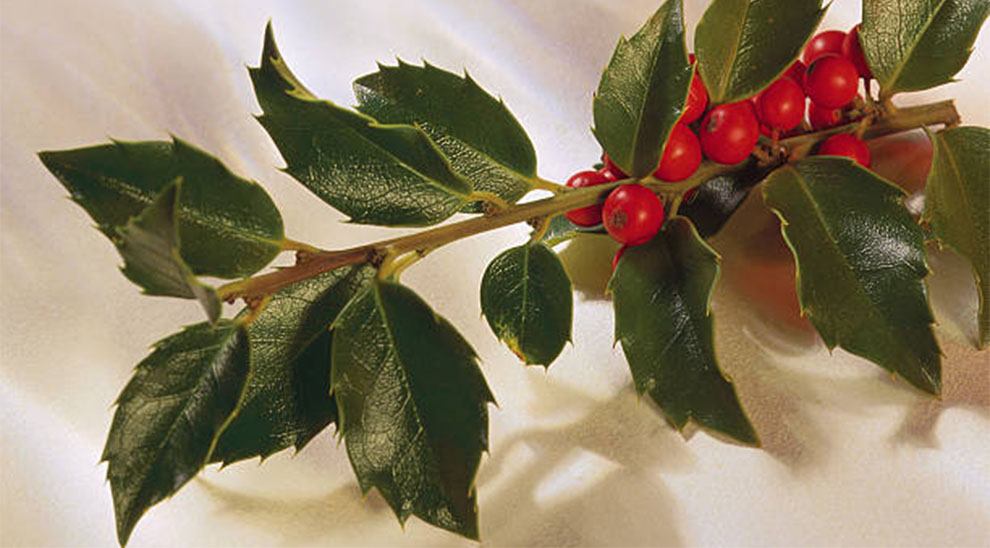
| Scientific name | Cornus Capitata |
| Edible berries | Yes |
| Where is it found? | Low-elevation woodlands of the Himalayas in China, India, Pakistan, Nepal, and Bhutan |
It is one of the most versatile additions to the evergreen trees and is too exotic to fit into the holiday theme. However, it is a rarer plant to grace your yard. The foliage of the red berries on tree in winter is exotic and seems a little like the foliage seen on peach trees. But it is not as dense.
Its blooms are round and white and present showy bracts, which seem like petals adorning the branches from spring to late summer. The plant yields large red berries and hangs onto the red stems. So, you can pick them and eat from there. Even the birds love its berries.
To yield the best results, you must plant the berries in zones eight through nine in a spot that receives full sun to partial shade.
11. Catberry
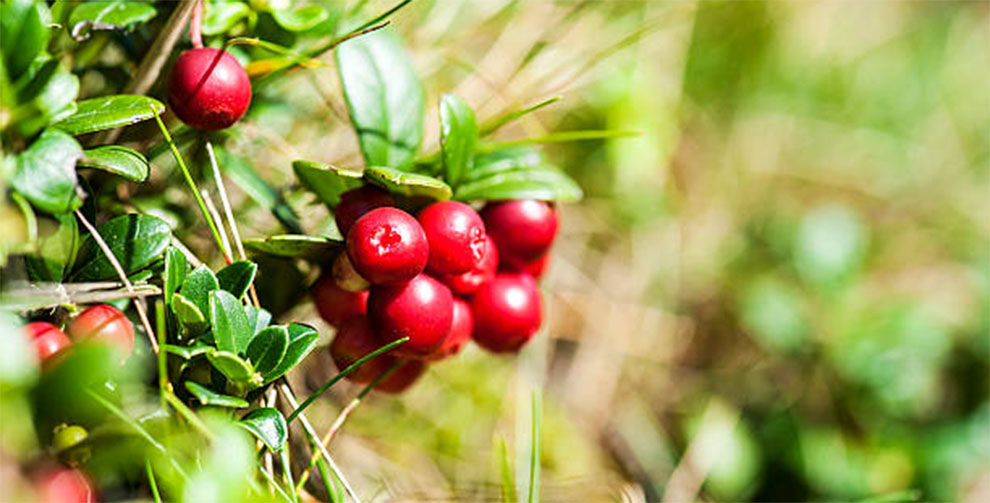
| Scientific name | Ilex mucronate |
| Edible berries | Yes |
| Where is it found? | Eastern North America |
Earlier called the Nemopanthus mucronatus, this tree is classified under the Ilex Genus. This shrub enjoys moist areas, and its red fruit is at the end of long stems known as peduncles. Its fruit is an excellent food source for migratory birds, and the plant is also known as the Mountain Holly.
This red winter berry bush thrives from hardy to zone four and grows between six and ten feet in areas where it receives full sun to partial shade.
Related: Vegetables to grow in winter|Fruit that grows in cold climates
Frequently Asked Questions
Ques 1. Are red berries on trees poisonous?
Ans. There is no one answer to this. While some red berries are poisonous, many are edible. Do check before consuming.
Ques 2. Are rowan berries edible?
Ans. Yes, they are edible, but they are naturally bitter. Hence, you can cook them with sugar to tame their flavor.
Ques 3. Which trees have red berries in summer?
Ans. Some trees that have red berries in summer are mulberries, cherry trees, and juneberries.
Ques 4. Are there any evergreen trees with red berries?
Ans. Nandina Domestica (Heavenly Bamboo) is one of the renowned evergreen trees with red berries.
